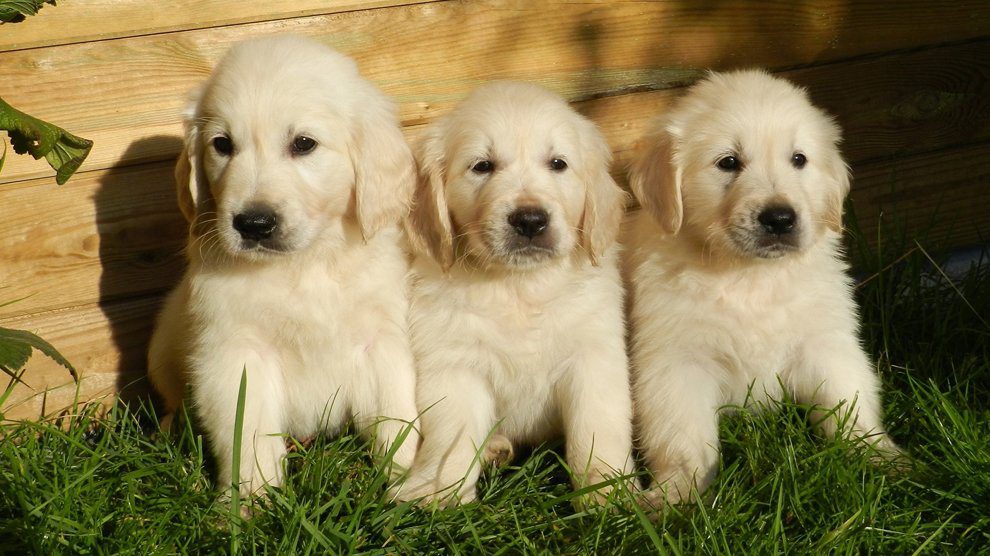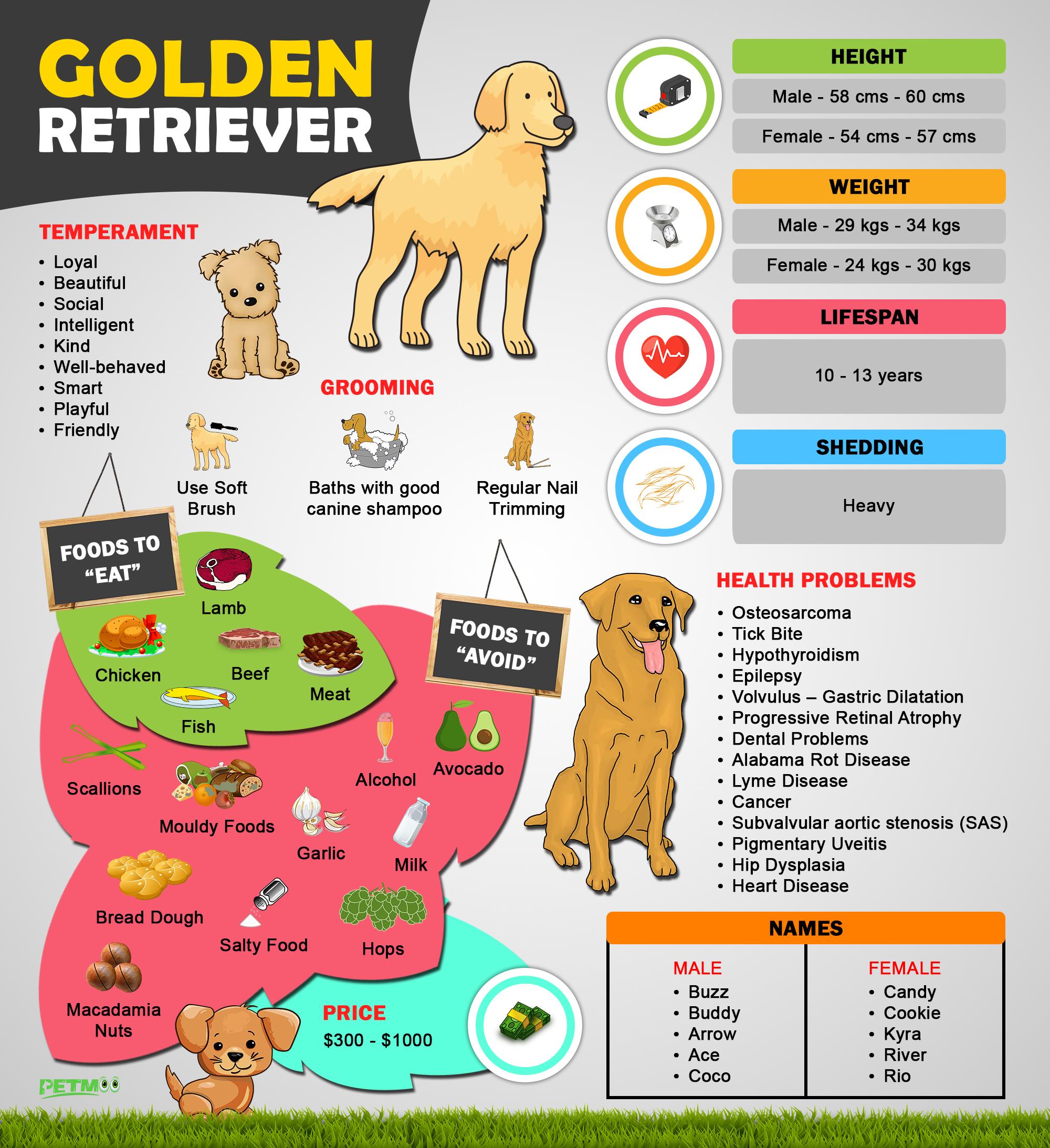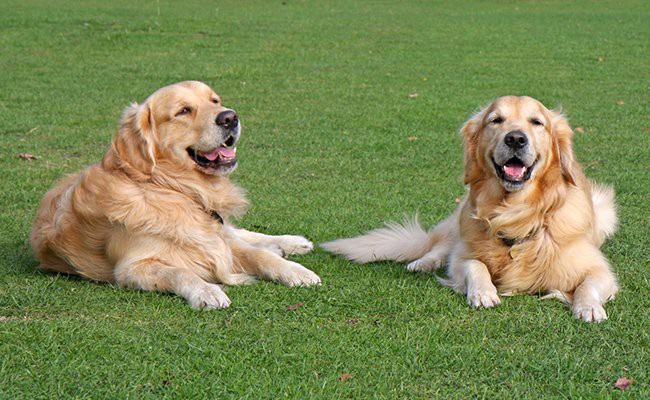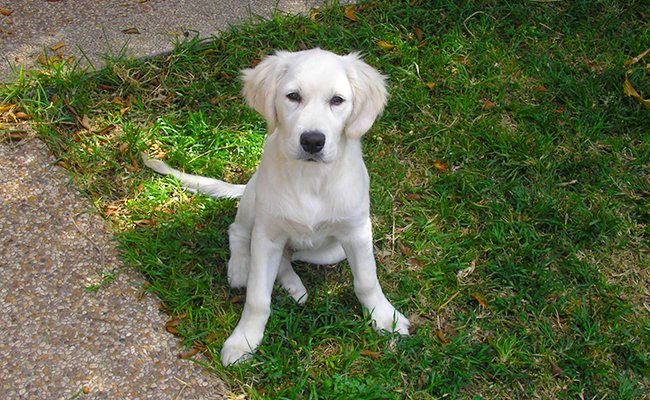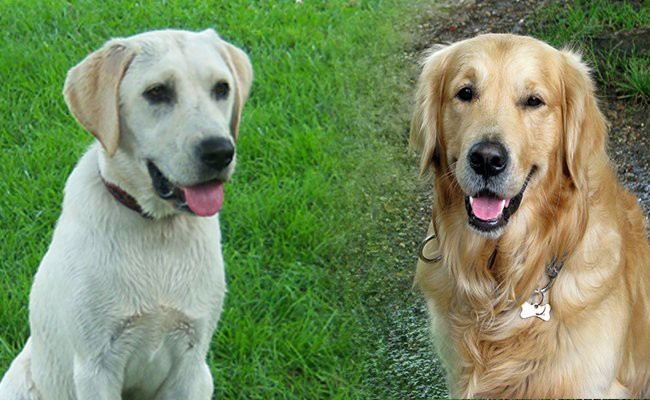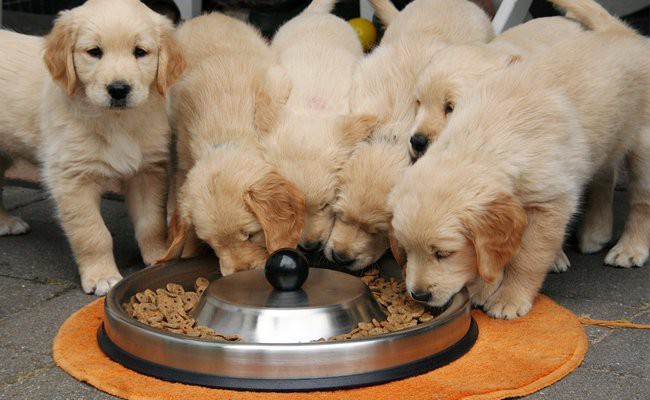Dog Pregnancy Calculator And Timeline
A strong muscular dog, popular for the shiny golden coat, Golden Retriever is a medium-sized dog with a very big heart. A kind, pleasing dog known for its stellar sensing abilities, Golden retriever puppies carry a special sense of aura when they move.
With this in mind, experts call this trait “merry action”. Not to mention, Golden Retrievers are very easy to train, loyal, and outgoing dogs.
History Of The Golden Retriever
The most popular name associated with Golden Retrievers is Lord Tweedmouth(first), Dudley Marjoribanks. For around five decades, spanning from almost 1840 to 1890, Dudley maintained documents related to the creation of a superior gundog.
In particular, Dudley aimed for a breed that can work in the rough terrain and rainy weather. So, for this purpose, he crossed Tweed Water Spaniel and Yellow Retriever. Later, he even tried Bloodhound and Irish Setter.
At last, Golden Retrievers started arriving in Canada and America by 1908 and became showstoppers overnight. However, Liberty, the Golden Retriever owned by Former American President Gerard Ford achieved stardom like none other.
Golden Retriever Facts
Golden Retriever Appearance
They carry a confident, alert, and an eager to cheer personality. In general, these dogs are strong, well-proportioned, powerful, and symmetrical in nature.
Furthermore, Goldens are hunting dogs; widely suited for hard and difficult working conditions. Their coat appears thick and is water repellent by nature. In addition, outer coat looks neither too silky nor too coarse.
Although cream colour looks attractive, Goldens appear magical in delightful shades of Gold. But, white or black markings do not meet the standard requirements of this breed. Eye rims, lips, and black nose also form a part of this breed.
Overall, Golden Retrievers are familiar for their inquisitive, dark eyes and for neither too long nor neither too short cute ears.
Golden Retriever Coat and Colour
Excellent undercoat with thick fur and water-resistant body. In general, the outer layer of the coat appears wavy, or straight.
Also, heavy fur on the tail, thighs and neck is a common sight. However, light to very light featherings is found on front legs, paws, or head as such.
To sum up, in this breed, soft coats, limp and open coats are considered inferior. Moreover, a noticeable section of any other colour including black is unacceptable per se.
Golden Retriever Colors
Lustrous and vibrant shades of golden. Additionally, feathering appears naturally light in certain areas. As a matter of fact, other than few white hairs, and whitening and greying of body or face due to old age, there are no exceptions.
And, body colour which looks dark or pale is outrightly rejected. However, exceptions are puppies that display signs of growing deep with age. No black and any other black colour is a major disadvantage.
Golden Retriever Size And Weight
Female Goldens can reach around 54 cms – 57 cms in height while the males can touch 58 cms to 60 cms. Also, male Golden Retrievers and female Golden Retrievers weigh between 29 kgs to 34 kgs and 24.9 kgs to 30.3 kgs respectively.
English Cream White Golden Retriever
How many times have you seen an English Cream White Golden Retriever in your neighbourhood? Probably once or twice. Am I right?
Are they similar to the regular Golden Retrievers that you see around more often? To help you make a well-informed decision, take a look at the facts about this white beauty.
History
English Cream White Golden Retrievers are nothing but Golden Retrievers appearing in a very light colour of gold. As a matter of fact, Golden Retrievers are popular since the early 19th century.
In 1925, AKC recognized Golden Retrievers and some people claim that white color Golden’s are rare. And this is not true.
Appearance
The suffix Golden Retriever does not exactly match the name English Cream White Golden Retriever.
The bone and body built of the English Cream White Retrievers appear much stronger and well-built. Furthermore, the head looks square-shaped tapering sidewards. Also, the eyes are more pronounced and dark.
Size and Weight
Male and Female English Cream White Retrievers are between 55 cms to 60 cms and 50 cms to 55 cms respectively. The weight of female and male White Retrievers are between 25 kg – 32 kg and 27 kg – 36 kg respectively.
English Cream White Golden Retriever Life Span
The average lifespan of an English Cream White Retriever is between 10 to 12 years.
Personality and Temperament
- Known for ultra-soft character and loyalty
- Intelligent, incredibly loyal, playful
- People buy this model due to their European ancestry which shines well in dog shows
Colours
They are mostly found in pale white or cream white colour.
Coat
The coats are lighter and shorter than the normal Golden Retrievers. In addition, the fur coats of this breed are much easy to brush and maintain regularly.
Shedding
The English Cream White Retrievers shed less than Golden Retriever because they contain less hair than the latter. Furthermore, they are much suited to grow in warm places. In addition, the shedding period is much shorter than their Golden counterparts.
Health
There is no substantial evidence to claim that Cream White Retrievers are much healthier than the normal Golden Retrievers.
Common health problems
- Eye issues
- Heart Disease
- Hip Dysplasia
- Genetic elbow deformities
Price
The average cost of a White Golden Retriever is around USD $ 1500 if you wish to buy one from a reputable breeder.
Golden Retriever Grooming
Do Golden Retriever Shed a Lot?
In all honesty, Golden Retrievers are heavy shedders. So, a nice soft brushing using a slicker brush at least once a week will reduce hair fall.
On the other hand, when heavy shedding happens, these type of brushing schedules can become a daily sight.
Especially, baths with good canine shampoo can help reduce the hair loss but no brushing till the coat is comTipspletely dry. Besides, Golden Retrievers require only occasional baths but nail trimming is a definite must for easy walking.
Must Read: Dog Shedding Management Tips
Golden Retriever Life Span
The longevity of a Golden Retriever Dog is between 10 to 13 years. However, the lifespan of this dog will increase through giving best food, daily exercises, closely monitoring its health and periodic visits to a top-quality veterinarian.
Some dogs are hard to live until 15-16 years if age if given best-in-class care by their owner. If the Golden Retriever Dog is vaccinated at the stipulated times, then it can also play a role in extending this dog’s lifespan.
Golden Retriever Temperament
Golden Retrievers are loyal, beautiful, social dogs and are also incredibly intelligent. And for many other reasons, it is one of the most sought-after dogs in America.
At times, these dogs are slow to grow up but are very sportive and lively.
Goldens excel and perform very well at retrieval activities and in fact, they are kind, well-behaved, smart, and playful dogs.
They also possess a very friendly bark and is still considered as the most preferred family dog, hands down.
If you are in search of a dog that is naturally friendly, enthusiastically puppy-like in nature for years, Golden should be your choice.
Overall, trustworthy, reliable, and soft natured, Golden Retrievers are perfect dogs for every occasion.
Golden Retriever Puppy Prices
There are certain adoption centres that do not charge a cent. In pet shops, they are sold between USD 300 to USD 1000. Professional and AKC certified breeders charge around USD 2500.
In conclusion, top breeders might sell excellent and healthy Golden Retriever puppies for the much higher price but it’s worth buying it.
Golden Retriever Puppy Training
In particular, puppy training lessons and early socialization paves the way in creating a well-behaved dog. Exposing the Golden to a different and new environment when they are between seven and twenty-eight weeks will guide them positively.
In addition, dog training is inbuilt within socialization lessons and these lessons would help detect any bad behaviour early. Obedience training cements the connection between owner and dog – your Golden will try everything and anything to please you.
Overall, Goldens are easy to please, loyal, and family dogs which definitely makes it easy to train them.
Exercise
Like other sporting dogs, Golden Retrievers require lots of physical work. Moreover, Goldens who are not provided with enough work can turn indiscipline. In fact, these dogs are best suited for bike rides and a long walk, although vet consultation will shed more light.
Most Goldens are happy to take part in activities like tracking, obedience, and agility. Finally, Goldens love to participate in field trials or hunting trips.
Labrador Retriever Vs Golden Retriever
This is crazy:
Golden Retriever versus Lab Retriever? And, both these dogs are popular in their own right. OK. Stay calm and we will help you make a choice.
But you’re probably wondering:
Both are terrific, loyal, and active in their own right. And how do I select the best one between Golden Retriever and Labrador Retriever?
To make your job damn easy, take a look at some of the major differences between the two which will help you make a choice.
| Traits | Golden Retriever | Labrador Retriever |
|---|---|---|
| Origin | Both these dogs are from one common ancestor- St. Johns Water Dog. But, Golden's are originally from Scotland. | This dog is said to have originated from Newfoundland, Canada. |
| Size | As per AKC standards- Male- 53 cms to 60 cms Female- 54 cms to 57 cms | Similarly, AKC recommends- Male- 57 cms to 60 cms Female- 54 cms to 59 cms |
| Weight | Females and males weigh between 24 kgs to 29 kgs and 29 kgs to 34 kgs respectively. | Males weigh between 29 kgs & 36 kgs and females weigh between 24 kgs & 31 kgs. |
| Life Expectancy | They normally live anywhere between 10 to 12 years. | Labs are much more healthy than Goldens and tend to live somewhere between 10-14 years. |
| Grooming | Mostly possess double coat-medium in length. Solid feathering on tail, legs, and neck. • Weekly once grooming required • Trim tail, neck, feet and ears | This dog has a well-protected double coat. No featherings on tail, neck, and ears. • Requires ear cleaning and nail trimming • Consists of undercoat and top coat (shorter than Goldens) |
| Shedding | Called as “blowing the coat” and they shed extensively around the year. Regular and frequent brushing will reduce dead fur. | Also needs regular grooming and seasonal shedding needs more care and attention. |
| Coat | Golden in shade. They vary from dark shades to light. | Mostly found in chocolate, yellow, and black. |
| Temperament | More sensitive, much gentler than Labs. Prefers tranquil and calm environment. Retired persons generally like Goldens over Labs. | Labs adjust well with active, lively children. A young family might choose a Lab over Golden. |
| Health | Goldens are more prone to- • Heart issues • Eye diseases (Progressive retinal atrophy) • Elbow and hip dysplasia • Risk of cancer-60% more in this breed • Popular cancer types- Lymphoma (Liver, spleen, lymph nodes) Hemangiosarcoma (Heart, spleen, blood vessel walls) | Labs are susceptible to- • Exercise-induced collapse • Eye disease • Elbow and hip dysplasia • Obesity is high in labs due to POMC gene variation |
| Breeders | Meet reputable breeders and check health certificates. | Ask for past references and records for immunization. |
- Generally speaking, Goldens are slightly smaller than the Labs. Also, Labs are sturdy and strong and Goldens appear well-proportioned and elegant.
- In general, Golden Retrievers might need more extensive daily grooming than Labrador Retrievers.
- Overall, Labs are much healthier than Goldens because many health issues can be avoided by regular testing. Also, Goldens are prone to cancer which puts them in a more delicate situation.
What’s the bottom line?
There is no good or bad choice in this hot debate. Potential Lab owners must decide upon factors such as pushiness, chewing and separation anxiety. On the contrary, Future Golden owners should consider coat care, neutering issues, and cancer risk.
Overall, both the breeds are lovely, friendly, and affectionate.
Golden Retriever Puppy Foods
Since Goldens are highly active dogs, they need to be fed at least twice a day, 2 or 3 bowls of superior quality. Bear in mind, certain Goldens can turn obese, therefore keep note of what you feed your dog.
Next, never overfeed your dog with all the treats. There are certain foods you should never feed your Golden. They are hops, avocado, alcohol, salty food items, milk(in certain cases), mouldy foods, Bread dough, Macadamia nuts, Scallions, Garlic etc.
Most favoured food items are lamb, fish, beef, and whole chicken or any meat proteins.
Golden Retriever Names
| Golden Retriever Male | Golden Retriever Female |
|---|---|
| Buzz | Candy |
| Buddy | Cookie |
| Arrow | Kyra |
| Ace | River |
| Coco | Rio |
| Dollar | Spike |
| Lucky | Tuffy |
| Max | Teddy |
| Messi | Stanley |
| Roger | Duet |
What Are Girl Dog Names For Golden Retrievers?
- Abigaile
- Carly
- Jennifer
- Ellie
- Aeris
- Jini
- Eskie
- Jetta
- Abbagail
- Najla
- Ruby
- Nancy
- Louise
Golden Retriever Puppies Interesting Facts
- Goldens, in 1908, was first exhibited as ‘Flat Coats’ in an event at the famous Crystal Palace in England.
- They are the most popular dog in the United States, thanks to shows like “Full House” and “Air Bud” movies.
- Post 9/11 in America, a Golden named Bretagne was pressed into the rescue effort. Later, Bretagne did his bit also during Hurricane Katrina and Rita.
- Charlie, a Golden Retriever, has clocked 113.1 decibels for the world’s loudest bark.
- Another Golden, Augie, held five regulation tennis balls in his mouth to claim the record “the most number of balls in the mouth”.
- Due to their excellent sensing abilities, Golden Retrievers are widely used in SAR operations and also in bomb detection events.
- Especially, these dogs are mainly pressed into services assisting the physically and visually challenged persons. Known for their excellent physical and mental strength, Golden Retrievers are the preferred assistant dogs after Labrador Retriever.
- Former American Presidents Ronald Reagan and Gerald Ford had Goldens while serving their term.
Golden Retriever Health Problems
Golden Retrievers are very sound dogs. Most responsible breeders will check for certain health conditions ranging from heart diseases, pigmentary uveitis, hip dysplasia, and juvenile cataracts. In addition, owners should check their dog’s teeth and ears for any visible signs of any infection.
A few of the health issues that can affect a Golden Retriever
1. Osteosarcoma
Symptoms
- Lethargy
- Swollen lump on the long bones
- The feeling of nodular unease below the skin
- Bone breakage happens despite doing some mediocre physical activity
Causes
- Genetic Factor
- Repeated exposure to carcinogenic substances
Treatment
The present stage of the Osteosarcoma (cancer) will determine the nature of treatment.
Osteosarcoma is a very intense form of cancer that will spread at an exponential pace throughout the body. Generally, Cisplatin is the frequently used chemotherapeutic drug for the treatment of dogs with Osteosarcoma.
Doxorubicin is considered as the next effective drug. It is essential to give a minimum of three doses to enhance the survival period for affected dogs. Usually, this disease’s severity and cost of surgery force the dog owners to follow palliative care for their dog.
Nevertheless, surgery is undertaken for relieving the dog from the severe pain caused by osteosarcoma through amputating its legs. Most importantly, the tumour is removed.
However, various limb correction surgeries exist and it depends on the age of the dog and the tumour size to pick the right limb surgery. It should not be forgotten that some risks will still remain despite undergoing these limb surgeries and they are:
- Limited movement of the limb
- High risk of getting a fracture
- Very limited pain
2. Tick Bite

Symptoms Of Tick Fever
- Heavy skin itching
- Burning sensation in the skin
- Swelling of the joints
- Laziness
- Depression
- Loss of Appetite
- Mild to High Fever
Causes
The bites caused by parasites called ticks and other infectious insects where the dogs are normally exposed to. The ticks can be found in grassy, bushy and woodland areas.
Treatment
The normal ways of treatment given for dogs that suffer tick bite include:
- Washing the tick bitten area with soap and water
- Disinfect the bitten area using rubbing alcohol
- Applying antibiotic ointment to the affected area
Supposing if there are signs of infection that appear after these steps, then visit a veterinarian.
Read Also: How To Kill Ticks?
3. Hypothyroidism

Symptoms
- Depression
- Weight gain
- Heart problem
- Seizures
Causes
- Atrophy of Thyroid Tissue
- Autoimmune Thyroiditis
- Lack of exercises
- Medications like steroids
- Tumour in the Thyroid
- Adrenal disorder
Treatment
Daily oral drugs like levothyroxine are given for dogs with hypothyroidism
Tyrosine and Iodine are other supporting nutritional cofactors that could be given by a veterinarian as a precautionary measure for avoiding hypothyroidism.
4. Epilepsy
Symptoms
- Head Shaking
- Weakness
- Teeth chewing and chomping
- Barking or whining out of anxiety
- Stiffness
- Paddling of legs
- Vomiting
- Sudden existence of seizures and its disappearance in a short time
- Body Weakness was seen on the face
- Fall down to one side
- Loss of Consciousness
- Urinary or bowel incontinence
- Temporary loss of vision
Causes
- Genetic factor
- Illness
- Head Injury
- Infection
- Bleeding
- Inflammation
- Brain Tumor
- Degenerative brain disorders
Treatment
Epilepsy is a long-term disease that could prolong throughout the life of a dog. The nature of treatment will be decided by a vet based on the dog’s age, nature of seizure, the frequency of seizures, kidney or liver problems and overall health.
Phenobarbital and Potassium bromide are the usually used drugs for treating epileptic dogs. Apart from these the vets also recommend dietary changes and some nutritional supplements in the diet.
5. Volvulus – Gastric Dilatation
Symptoms
- Restless Behavior
- The high rate of heartbeat
- Excess Drooling
- Vomiting
- Enlarged Abdomen
- Pale Gums
- Collapse
Causes
- Doing highly straining exercise
- Intake of the heavy meal
- Drinking excessive amount of water
Treatment
A vet will initialize treatment for gastric volvulus dilatation in dogs by undertaking gastric decompression and infusion of fluids to counteract shock.
After the dog comes to a stable position, the vet will perform surgery for restoring the stomach to the usual position through suturing the stomach to the abdominal wall. Gastropexy is the surgery that is undertaken for the stated activity.
6. Progressive Retinal Atrophy

Symptoms
- Unwilling to climb stairs
- Avoids jumping on or off furniture
- The poor or slow response of pupils to light
- Respond very slowly even during emergency situations
- Avoidance of traveling in unfamiliar areas during the night time
- Cloudy appearance on the surface of the eyes with a green sheen
- Cataracts
- Loss of vision leading to bumping on furniture, walls, and windows in the house
- Slipping over objects
Causes
Genetic disorder
Treatment
There is no specific treatment for curing progressive retinal atrophy since it is a hereditary disorder. Some environmental changes in the house that suit the dog to live its remaining life can be done.
Moving the furniture to a lesser distance that enables the dog to live comfortably is one such example.
7. Dental Problems

Gum diseases and fractured teeth are often suffered by dogs.
Symptoms
- Changed eating behaviour
- Bleeding gums
- Loss of appetite
- Loose Teeth
- Drooling
- Aggressive behavior
- Presence of blood spots on chewed toys
- Bad breath
Causes
- Hereditary Factors
- Overall Health conditions
- Age
- Diet
- Chewing Behavior
- Alignment of the Tooth
- Dental hygiene
Treatment
Based on the stage of the dental problem, the needful treatment will be given. Professional dental cleaning will be undertaken for dogs with mild to moderate gum problems.
The removal of plaque, tartar and disallowing entry of bacteria will be done at the vet’s clinic. Tartar will be removed by using an ultrasonic scaler. The crevices on the teeth’s surface will be covered through polishing.
In complicated cases, surgery will be called for by the vet. The procedure of opening the gums for exposing the tooth root to complete cleaning and treatment will be done.
Sealants, slowly working antibiotics for growth and bone growth stimulants will be added to ensure healing. In the cases of loose and cracked teeth, extraction will be done.
8. Alabama Rot Disease
Symptoms
- Skin Lesions mostly appear on the lower leg
- The appearance of sores on the legs, body, mouth or tongue
- The dog begins to lick its foot and habituates gradually
- Vomiting
- Exhaustion
- Loss of Appetite
- Kidney Failure
Causes
Some unconfirmed reports state that Aeromonas Hydrophilic bacteria, which attacks fish also cause the Alabama rot disease in dogs.
Treatment
According to vets, early detection of Alabama Rot disease can give the hope of survival for a dog. Disorders like skin sores and kidney failure will be initially treated in dogs with Alabama Rot.
9. Lyme Disease
Symptoms
- Arthritis
- Loss of appetite
- Dullness in the face
- Fever
- Lazy attitude
- Swollen lymph nodes
Causes
Poor Immune System
Treatment
Oral Doxycycline is normally given to the dog affected by Lyme disease for 4 weeks. Apart from that, Pain relievers like Aspirin, Dietary therapy, Omega-3 fatty acids, Hypertension medications, and ACE inhibitors are also given.
Antibiotics and vaccination for protection from the Borrelia burgdorferi bacteria are also followed.
10. Cancer
Dogs are known to get affected due to different forms of cancer. They may turn lethargic and weak over the course of time.
Causes of Cancer
Medical science is still grappling for answers in this area because even modern research could not pinpoint the exact reason behind this disorder.
Furthermore, certain dog breeds are susceptible to certain forms of cancer due to genetic factors. The various forms of cancer are mammary neoplasia and oral melanoma etc.
Symptoms of Cancer
Simple signs include the gradual appearance of a mass and dogs may not be aware of these changes.
Also, whether it’s malign or not, only a qualified veterinarian can detect. Other signs include-
- Severe weight loss and fever
- Pale appearing mucous membranes
- Extra large lymph nodes or frequent diarrhea
- General fatigue and weakness
Note- Specific dog breeds such as Greyhounds or any other male dog belonging to large breeds are more prone to bone cancer or osteosarcoma.
Treatment for Cancer in Dogs
The primary purpose of this treatment is to stop further growth and treat the affected area with available medications. When an owner notices certain changes in his pet’s body, he should take it seriously and consult a vet as soon as possible.
There are plenty of treatment options including surgery, biological therapies, chemotherapy, and radiation. Moreover, the latest forms of therapies are thermo-chemotherapy, phototherapy, and other alternative therapies.
11. Subvalvular aortic stenosis (SAS)
Firstly, dogs that suffer from subvalvular aortic stenosis are usually born with this disorder. Being the most popular type of aortic stenosis, most dogs do not require any major treatment.
In this condition, the aorta gets affected and immediate medical attention can reduce further complications.
Causes
This condition occurs due to a ridge inside the left ventricular tract located right next to the aortic valve.
As a result, breeds that are affected by this condition are Golden Retrievers, Newfoundlands, German Shepherds, Rottweilers, and Boxers.
Symptoms
Signs of SAS include
- Femoral pulse sounding very weak
- Systolic heart conditions
- Exercise intolerance
- Losing consciousness
- Lethargic activities
Treating SAS in dogs
There are two ways to treat this condition. They are surgery and treated with medicines. For those who prefer medicines, your vet might suggest beta-blocker or other medicines to control ventricular stress.
For surgery-lovers, balloon valvuloplasty is one of the available options. Finally, another option such as open resection is a very costly procedure with a high risk of mortality.
12. Pigmentary Uveitis
Also called as Retriever Uveitis, this condition is the main reason for blindness in this breed. When uvea is affected due to inflammation, it in turn also affects other conditions such as choroid, ciliary body, and iris.
Other factors that contribute towards uveitis are autoimmune diseases and infections.
Causes
Although, the main mode of pigmentary uveitis is still under research and vets have declared that uveitis is mostly a genetic disorder.
Also, pigmentary uveitis is related to uveal cysts but it’s not easily visible during the examination.
Symptoms
Some of the symptoms are cloudiness, eye redness, and squinting. Due to this condition, intraocular inflammation is present.
Other issues related to this condition include glaucoma and secondary cataracts.
Treatment
Typical ways of treatment consist of the use of topical drugs and steroids. Since glaucoma can result in loss of eyesight, anti-glaucoma treatment is recommended in certain cases.
Also, if there is a sudden increase in pressure(intraocular) then surgery may be considered depending on the condition.
13. Hip Dysplasia
Symptoms
- Lethargy
- Limited range of motion
- Difficulty to come to a standing position
- Avoidance of exercises
- A gradual reduction in daily activities
- Avoids the activity of climbing or running down the stairs
- Loose joints
- A handicap of the back legs
- Stiffness
- Gait style of walk
- Bulged shoulder muscles due to excess pressure applied to the front leg
Causes
- Hereditary Factor
- Malnutrition
- No Exercise
- Excess Weight gain
Treatment
Dogs with mild hip dysplasia
- Changes in the diet that results in lack of stress to the hips
- Avoid exercising on hard surfaces
- Physical Therapy
- Anti-inflammatory drugs such as NSAID (non-steroidal anti-inflammatory drugs) and drugs like corticosteroid
- Application of Joint fluid modifiers
For dogs in the moderate to severe stage of hip dysplasia
- DPO/TPO (Double pelvic osteotomy/Triple pelvic osteotomy) – The pelvic bone will be cut off and the segment is rotated. The purpose is to improve the working of the ball and socket joints. The surgery is usually done on dogs that are below 10 months.
- FHO (Femoral Head Osteotomy) – The femoral head or ball of the hip joint is removed. The formation of an artificial hip joint will decrease the inconvenience and pain suffered by the dog before the surgery done for hip dysplasia.
- THR (Total Hip Replacement) – Total hip replacement surgery is the commonest surgery that is done for removing the affected hip of a dog. The new hip implanted could be in metal or plastic.
14. Heart Disease
Symptoms
Initial stage symptoms include:
- Feeling of tiredness within a short time
- Restless movement
- Avoids exercises
- Coughing after exercise and during the night within a couple of hours after going to sleep
Secondary stage symptoms:
- Loss of weight
- Loss of appetite
- Breathing difficulty
- Wheezing
- Frequent panting
- Swelling of the abdomen
Severe stage symptoms:
- Unusual sitting posture with spread elbows and head in an extended position
- The erratic and speedy rate of the pulse beat
- Bluish gums
- Shortness of breath
- Collapse due to stress
Causes
- Congenital defect – The dog is born with a defective heart
- Acquired – This kind of heart problem happens in a dog due to:
- Injury
- Bacterial infection
- Heartworm infection
- Wear and Tear
- Hormonal disorders acquired due to Cushing’s disease and hypothyroidism
- Hemangiosarcoma in the heart (a type of cancer)
- Chronic valvular disease
- Dilated cardiomyopathy
Treatment
A veterinarian can undertake different types of treatment for heart failure but only after closely observing the disease and the requirement.
Treatment methods can range from:
- Basic treatment methods like advising low-salt and moderate exercise
- Digitalis type drugs to control the fast rate of heartbeat
- Ace inhibitors which comprise drugs like Benazepril and Enacard for cardiomyopathy and valvular heart disease. Basically, Ace inhibitors work to decrease the blood pressure level and thereby decrease the stress levels of the heart muscles.
- Diuretics like Lasix to effectively handle the problem of fluid accumulation in the lungs
- Supplements that have antioxidant properties like Vitamins A, B6, C and E, Coenzyme Q10, L-Taurine and L-Carnitine
Golden Retriever Rescue
Like, we humans, have a family to fall back, every dog needs one. Their cute little shiny eyes are always in search of love and affection. In case, if you decide to bring home a Golden, you have to stay committed right until the end and honest no thoughts about abandoning them.
Finally, people who take home Golden Retrievers describe them as intuitive, gentle, loving and wonderful dogs.
Golden Retriever Breeders / Adoption Centers
- Golden Retriever Club of America
Address:
Marilyn Hartman
W5134 Rienzi Road
Fond du Lac, WI 54935-9603
Phone: (414) 923-0198 - Goldiva Goldens and Gardens, LLC
Address:
North Yarmouth, Maine
1 Redmond Rd.,
North Yarmouth, Maine 04097 - Goldiva Goldens, LLC
Address:
Cumberland, Maine
12 Wildflower Way
Cumberland, Maine 04021 - North Star Golden Retrievers
Address:
Logan, Utah
Email: puppies@northstargoldens.com

